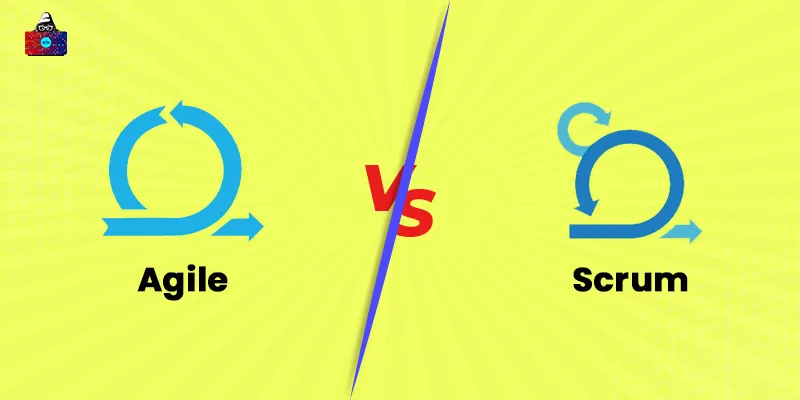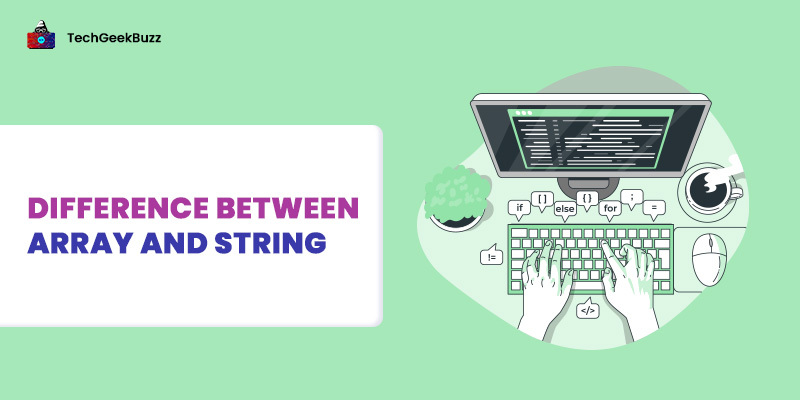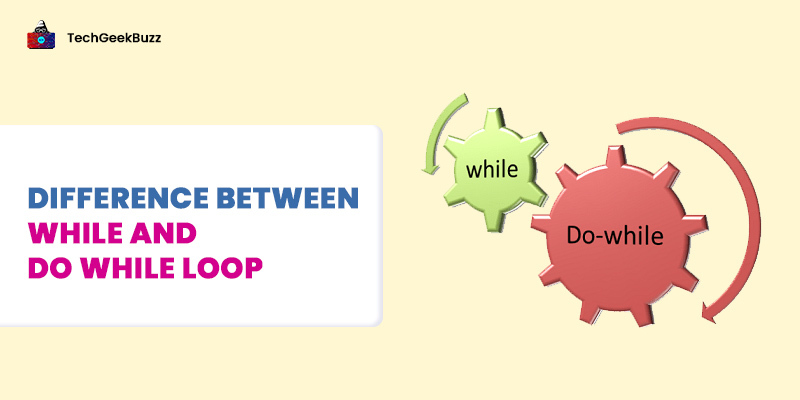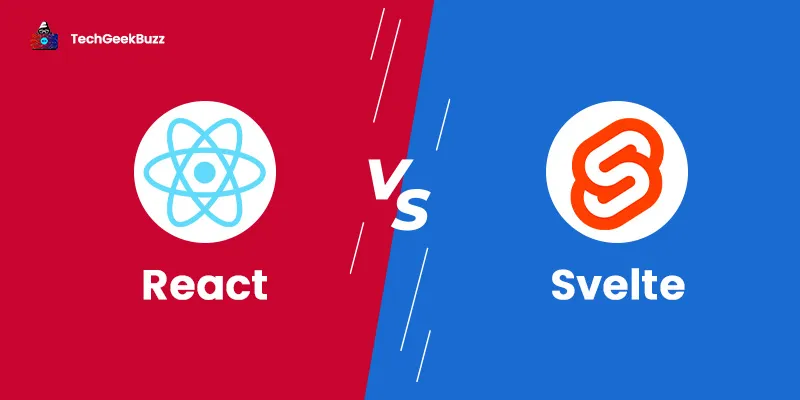When it comes to software development, the two terms that most of us come across are agile and scrum. In case you don’t know, agile and scrum are widely used software development methodologies that focus on the idea of iterative development.
Agile is an approach to software development that emphasizes finishing the development of a software product in small increments. It is ideal for developing software products where requirements are not clear at the onset.
On the flip side, scrum is one of the methods of agile methodologies. We can think of it as a structure to put Agile principles into practice.
Well, this article intends to make you familiar with the significant differences between agile and scrum methodologies. But before diving deep into the differences, let us first discuss both the SDLC methodologies , along with their principles, pros, and cons, to develop a better understanding of them.
What is Agile Methodology?
Agile is an incremental and iterative approach to software development and project management that helps to deliver high-grade products quickly. Alternatively, it is a practice of managing a project by dividing it into several phases. It involves constant development and testing of a product throughout its lifetime. In addition, the development team and stakeholders constantly communicate with each other and improve the quality of a product at every phase.
In the agile methodology, developers and testers work concurrently. As soon as developers build a small functionality of a product, testers test them immediately, and the progress of the product is shared with the stakeholders. Stakeholders provide feedback, and then the development team works accordingly.
Therefore, the agile methodology involves constant planning, execution, delivery, collaboration with stakeholders or end-users, improvement, and responses to changes in requirements.
History
During the 1990s, multiple lightweight software development methodologies were developed in reaction to heavyweight methods, which are collectively referred to as waterfall. These lightweight methods included rapid application development (RAD), the unified process (UP) and dynamic systems development method (DSDM), Scrum, feature-driven development, and Crystal Clear and extreme programming (XP). All these methodologies are collectively referred to as agile software development methods.
In 2001, 17 software developers arranged a meeting in a cafe to discuss these lightweight development methods and together published the Agile Manifesto for Agile Software Development.
Agile Manifesto for Agile Software Development
The Agile Manifesto for Agile Software Development involves four core values and twelve software development principles that are as follows:
Agile Software Development Values
- Individuals and interactions over processes and tools.
- Working software over comprehensive documentation.
- Customer collaboration over contract negotiation.
- Responding to change over following a plan.
Agile Software Development Principles
- Customer satisfaction by continuous or frequent delivery of a software product.
- Accepting change in requirements even in the late development.
- Delivering working software frequently within weeks rather than in months.
- Constant communication between stakeholders and the development team.
- Building projects around motivated individuals who are trusted.
- Carrying out a face-to-face conversation is the best form of communication.
- Working software is the primary measure of progress.
- Sustainable development.
- Paying continuous attention to technical excellence and sound design.
- Focusing on simplicity is essential.
- Self-organizing teams provide the best architectures, designs, and requirements.
- Tracking the performance of a software product after every phase and making changes as and when required by the stakeholders.
Advantages and Disadvantages of the Agile Methodology
Let us now discuss the advantages and disadvantages of the agile methodology below.
Advantages
- Flexible: Flexibility is considered one of the most desirable benefits of the agile methodology because it helps to meet the ever-changing requirements of stakeholders. Also, since this methodology divides a project into smaller chunks, it becomes more flexible for teams to implement changes in less time.
- Customer Satisfaction: In conventional software development methodology, like a waterfall, customer involvement takes place only at the planning phase and not during the development of a product. However, in agile methodology, customers are involved throughout the development process. Therefore, the final product is something that the customers expect as it is entirely developed according to their requirements.
- Superior Quality: As mentioned earlier, developers and testers work simultaneously in agile development. Every small functionality of a product implemented by developers is tested and fixed immediately in case of errors, which ensures the superior quality of the end product.
- Continuous Improvement: Since the agile approach divides a project into smaller sprints, there is always a scope for improvement in each sprint. Each sprint will be more efficient and better than the last one. The constant collaboration with the stakeholders helps the team improve and develop a better product.
Disadvantages
- Poor Resource Planning: Since agile is an iterative and incremental approach to software development, teams are not aware of the final product at the beginning of the development process. Therefore, it becomes challenging to estimate the required cost, time, and resources at the beginning.
- Limited Documentation: One of the greatest drawbacks of the agile methodology is the lack of documentation during the development process. This is because of the iterative nature of agile development and the ever-changing requirements of stakeholders or end-users. Therefore, documentation in agile methodology is less detailed.
- No Finite End: The agile methodology requires less planning initially, but there is no finite end since the development team does not have a clear vision of the final product.
When to Choose Agile?
Agile is the best software development approach to use for projects whose details are unclear from the beginning. It is ideal for teams or industries that deal with products having constant and unpredictable changes. It would not be effective for projects having strict scope and development requirements.
What is Scrum in Agile?
Scrum is one of the agile software development methods, and hence, it is a subset of agile. It is a lightweight framework that enables software development teams to develop, deliver, and sustain products in complex environments. It allows software development teams to concentrate on delivering business values in a short time by constantly inspecting a working software.
We can also think of Scrum as a methodology that identifies what will be the work, who will do the work, how it will be accomplished, and when it will be accomplished. This agile method is ideal for a team with ten or fewer members, and they divide the work into goals and complete them in time-boxed iterations, called sprints. Each sprint is no longer than a month and is ideally of two weeks.
In the Scrum method, the project team consists of a Product Owner, Scrum Master, and Scrum Team.
- Product Owner: The product owner is responsible for creating a product backlog and maximizing the product’s value. They constantly communicate with stakeholders and the development team.
- Scrum Master: The Scrum Master is responsible for ensuring that the development process is smooth and hassle-free. Also, Scrum Master is responsible for eliminating all obstacles that affect the productivity of the development team.
- Scrum Team: It is a cross-functional team of developers and testers that focuses on developing and testing every incremental build of a product.
History
In 1986, Hirotaka Takeuchi and Ikujiro Nonaka introduced the term ‘Scrum’ in ‘The New New Product Development Game', which is a Harvard Business Review article . Schwaber with Babatunde Ogunnaike carried out research at DuPont Research Station and the University of Delaware.
The Scrum framework was based on this research. In this research, they found that the attempts to develop complex products, such as software, were not successful and have high risks. In the early 1990s, Ken Schwaber used the Advanced Development Methods, which would be the scrum at this company. At the same time, Jeff Sutherland, John Scumniotales, and Jeff McKenna developed a similar approach at Easel Corporation and referred to it as scrum.
Later, Ken Schwaber and Jeff Sutherland worked together and integrated their ideas into a single framework called Scrum. They tested the Scrum framework multiple times and continually improved it, and since 2002, it has been used globally.
Principles of Scrum
The Scrum framework depends on six principles that are as follows:
- Control over the Empirical Process: The empirical process in the scrum methodology depends on the observation of hard evidence and experimentations rather than theory. Transparency, inspection, and adaption are the three principal ideas to the empirical process.
- Self-Organization: Self-organization is essential in the scrum methodology since it involves many individuals, and all of them work independently.
- Collaboration: Daily meetings are conducted in the scrum approach to track the product's progress under development. Collaboration in this approach primarily revolves around three dimensions, namely awareness, articulation, and appropriation.
- Value-based Prioritization: This approach works by organizing and prioritizing tasks based on their value.
- Time-Boxed: All tasks are completed in ‘sprints’, where each sprint is assigned with a specific time period, generally two to three weeks. When all tasks are time-boxed, everyone in the team is aware of the time allocated for each task, which eliminates delays.
- Iterative Development: Iterative development enables the Scrum team to refine or make changes to a project multiple times during the development process.
Advantages and Disadvantages of Scrum
Here are some notable upsides and downsides of Scrum:
Advantages
- Scrum enables development teams to accomplish project deliverables quickly and efficiently.
- It is ideal in several situations that do not have identifiable requirements initially.
- Dividing large projects into smaller sprints makes it easier for the development team to manage each sprint with the utmost accuracy.
- Adopting the Scrum approach can be cost-effective since it requires less documentation and control.
- Since the development team constantly receives feedback from the product owner or stakeholders, the Scrum methodology ensures maximum customer satisfaction.
- The Scrum framework delivers quick and high-quality results.
Disadvantages
- Scrum requires highly skilled and well-trained team members.
- It is ideal for small teams that have great understanding.
- Scrum is a perfect choice for small and medium-sized projects, but it becomes challenging to scale large and complex projects.
When to Choose Scrum?
Scrum is a perfect method to choose when dealing with complex projects in changing environments. It is ideal to choose when your project requires constant feedback from stakeholders, the development team requires autonomy, and you need to deliver the product regularly.
Agile vs Scrum: Head-to-Head Comparison
The following table draws a comprehensive comparison between agile and scrum:
| Agile | Scrum |
| Agile methodology is an incremental and iterative approach to software development. | Scrum is one of the agile software development methods that focus on delivering incremental builds of a product to customers within two to three weeks. |
| In the agile approach, leadership plays a vital role. | This software development approach promotes a cross-functional and self-organizing team. |
| Working software is a fundamental measure of progress. | Working software is not the fundamental measure of progress. |
| In the agile approach, the design and execution of a software product can be simple. | In the scrum approach, the design and execution of a software product can be innovative. |
| A project head is responsible for managing all tasks and issues occurring during the development process. | The entire development team is responsible for handling any issues or challenges. |
| Compared to scrum, the agile approach is rigid, and hence, there is not much scope for frequent changes. | Scrum is more flexible than agile and has much scope for frequent changes. |
| The agile approach requires frequent delivery to end-users for their feedback. | The scrum method delivers each build of a software product after every sprint. |
| In the agile approach, customer satisfaction by offering the continuous delivery of a software product is the priority. | The empirical Control Process is the core philosophy of the scrum method. |
| This method involves customer or end-user involvement to provide feedback throughout the development process. | In the scrum method, a daily sprint meeting is conducted to get feedback from stakeholders and decide the future progress of a project. |
Agile vs Scrum - Which One to Choose?
Both agile and scrum are productive and effective approaches to software development. However, the question “Which one to choose - agile or scrum?” is inappropriate because scrum itself is one of the several methodologies to implement agile principles. Agile is an umbrella term for the scrum, i.e., agile is the superset of the scrum. The right question would be ‘Which agile methodology should you choose?’.
For this question, the answer would be either scrum or any other agile methodology. Once you decide to go with the agile methodology, you have to determine whether or not Scrum is the ideal choice for your project. If your project does not have clear requirements at the onset and requires frequent changes and testing, going with the Scrum methodology would be a great move.
Conclusion
Agile and scrum are two well-known approaches to software development. Both are ideal to choose when a project requires frequent changes and the requirements are unclear and ever-changing. But it is important to note that Scrum is one of the approaches to implementing agile principles.
Therefore, choosing any one methodology over the other is not possible. Instead, you can choose between different agile methodologies, like Scrum, RAD, Unified Process, Extreme Programming, DSDM, or feature-driven development.
We hope this article has helped you develop a better understanding of agile and scrum methodologies. If you have any questions, feel free to share them in the comments section below.
People are also reading:




